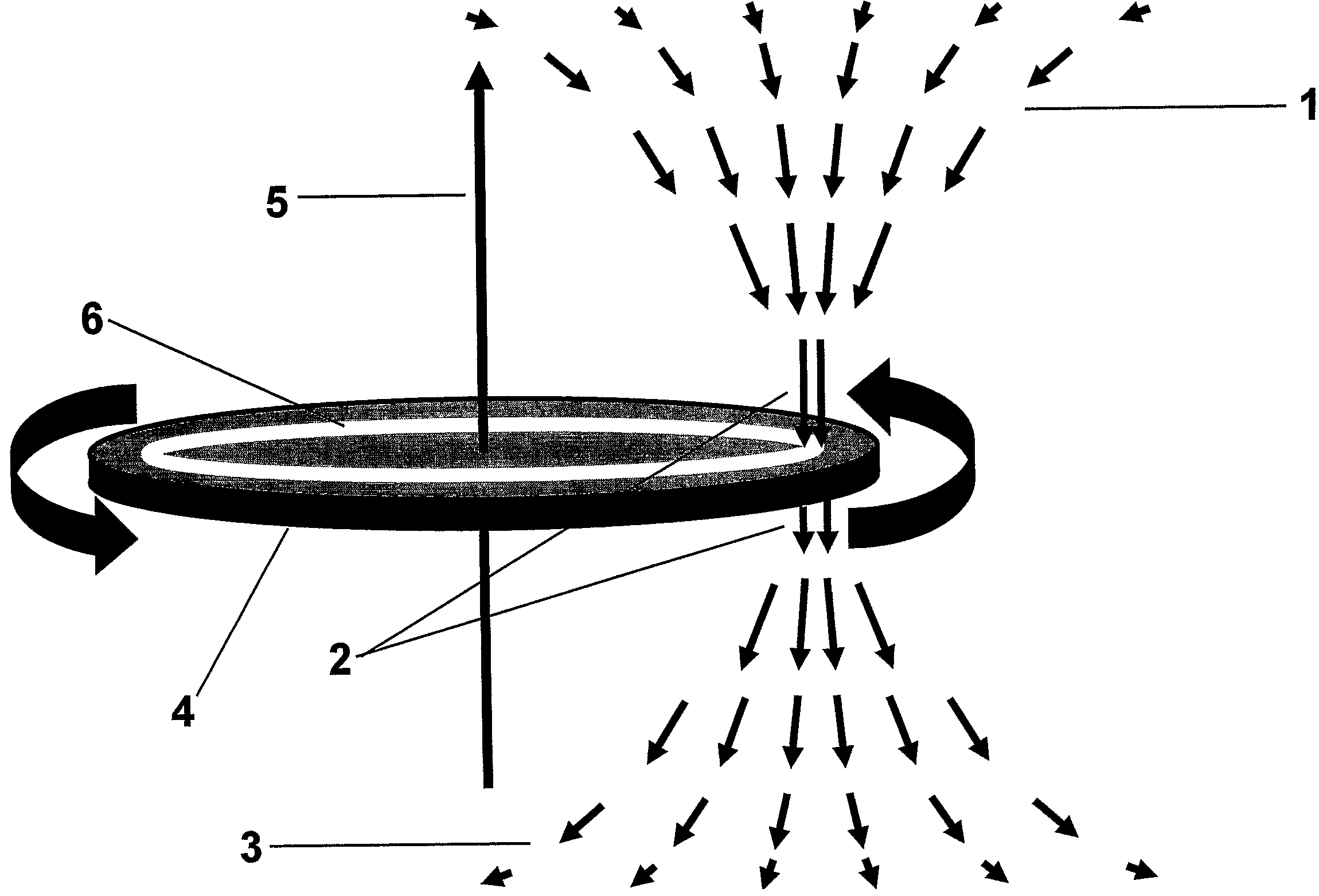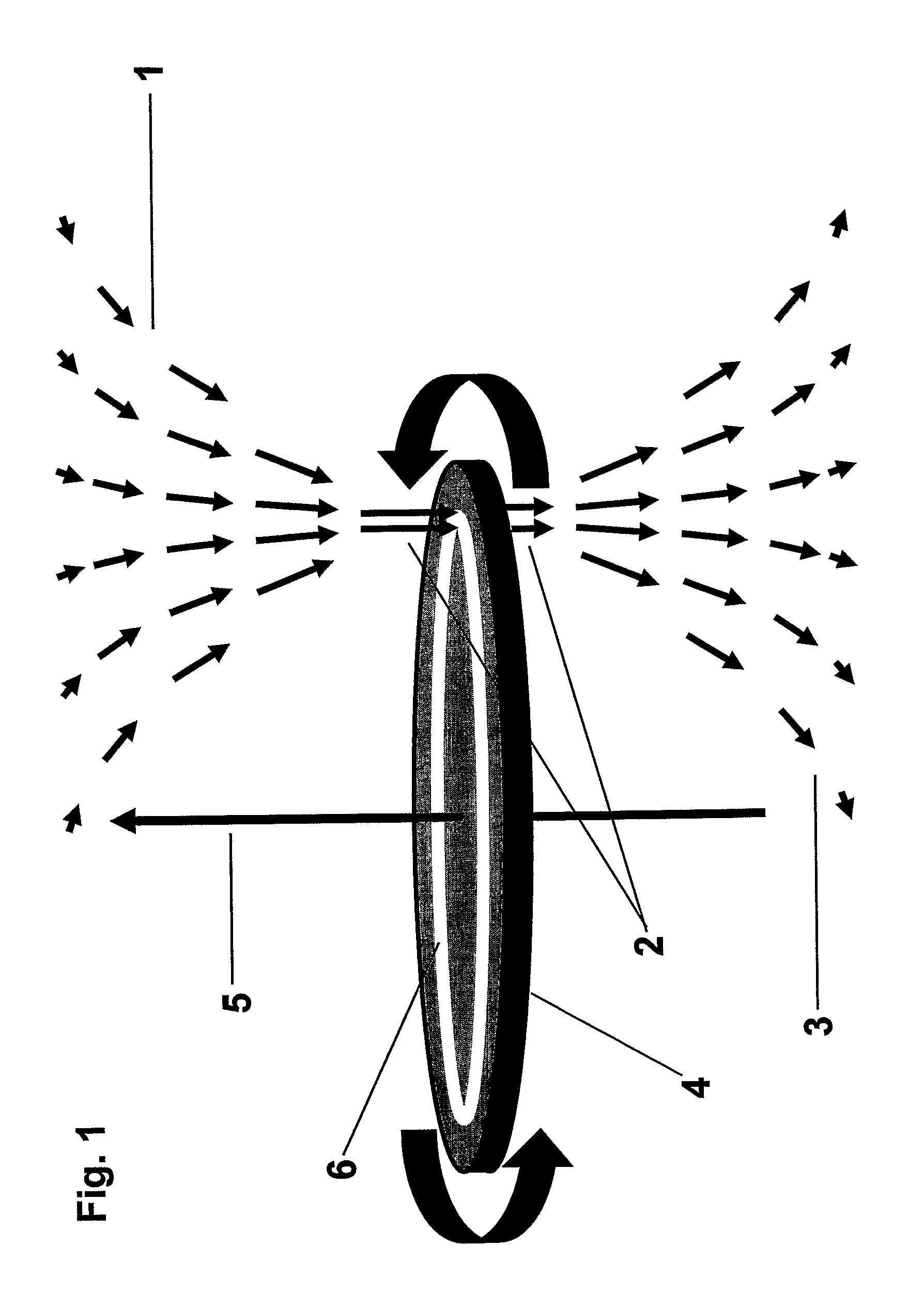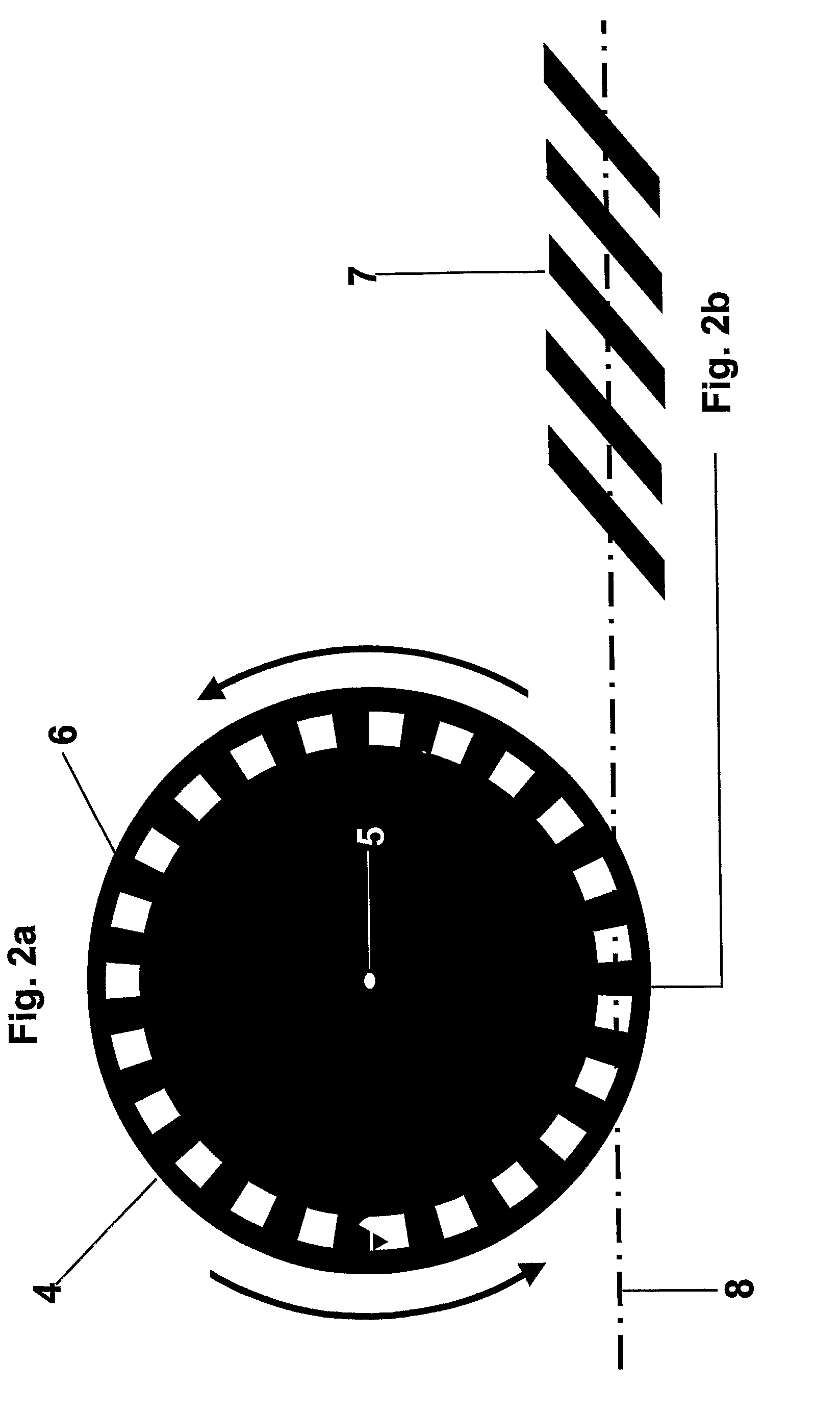Rotating bernoulli heat pump
a heat pump and rotating technology, applied in the field of bernoulli heat pumps, can solve the problem that heat pumps necessarily consume power
- Summary
- Abstract
- Description
- Claims
- Application Information
AI Technical Summary
Benefits of technology
Problems solved by technology
Method used
Image
Examples
Embodiment Construction
[0037]In embodiments of the invention, a rotating disk 4 creates a heat pump by maintaining within the heat-sink fluid flow an hour-glass-shaped Venturi 1-2-3, into which heat flows spontaneously as a result of the depressed temperature in the neck 2 of the Venturi. Heat flows within the disk 15, and enters the heat-sink Venturi at its low-temperature neck 2. Fluid flow in the neck 2 of the heat-sink Venturi is characterized by a direction. Three classes of embodiments are distinguished by this flow direction in the Venturi neck 2, relative to the rotation axis of the rotating disk. Flow in the Venturi neck 2 can be axial (FIGS. 1-6), radial (FIGS. 7 and 8) or circumferential (FIGS. 9 and 10), corresponding respectively to the three cylindrical coordinates, z, r and theta, appropriate to the description of rotating systems. In the figures describing fluid flows by fields of arrows, the length of the arrow represents the local speed of the flow in the direction of the arrow.
[0038]Con...
PUM
 Login to View More
Login to View More Abstract
Description
Claims
Application Information
 Login to View More
Login to View More - R&D
- Intellectual Property
- Life Sciences
- Materials
- Tech Scout
- Unparalleled Data Quality
- Higher Quality Content
- 60% Fewer Hallucinations
Browse by: Latest US Patents, China's latest patents, Technical Efficacy Thesaurus, Application Domain, Technology Topic, Popular Technical Reports.
© 2025 PatSnap. All rights reserved.Legal|Privacy policy|Modern Slavery Act Transparency Statement|Sitemap|About US| Contact US: help@patsnap.com



